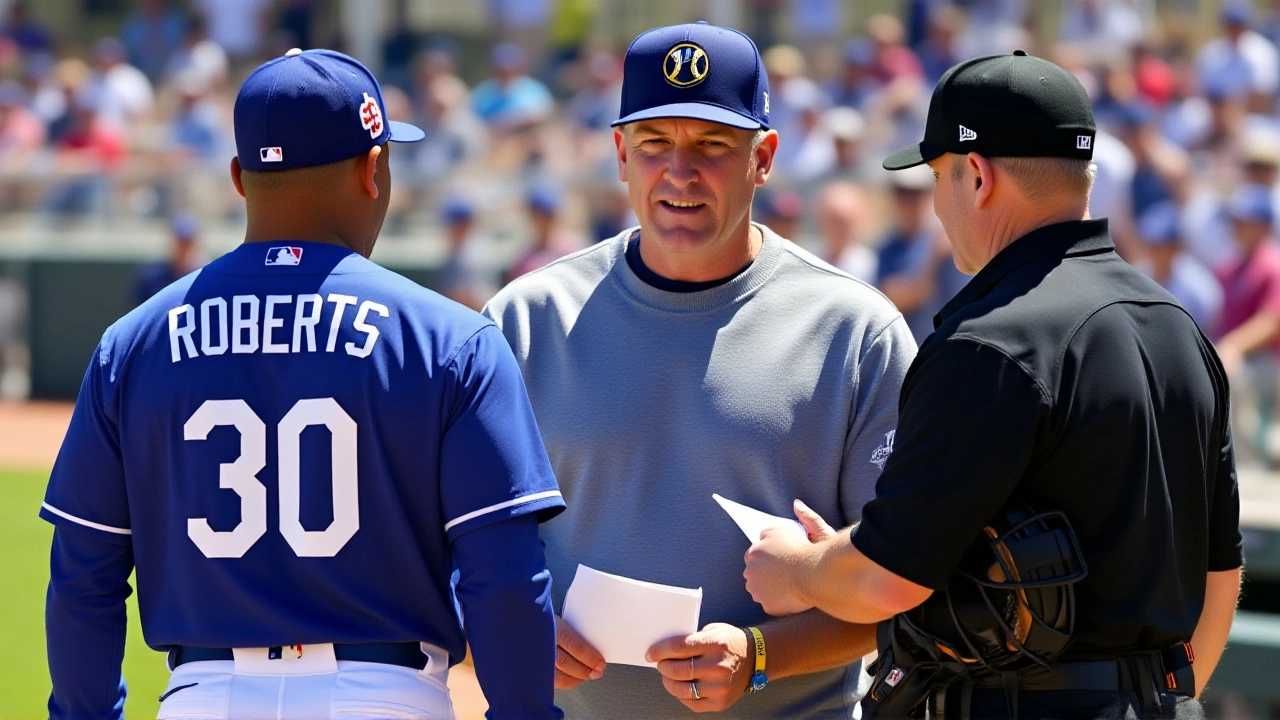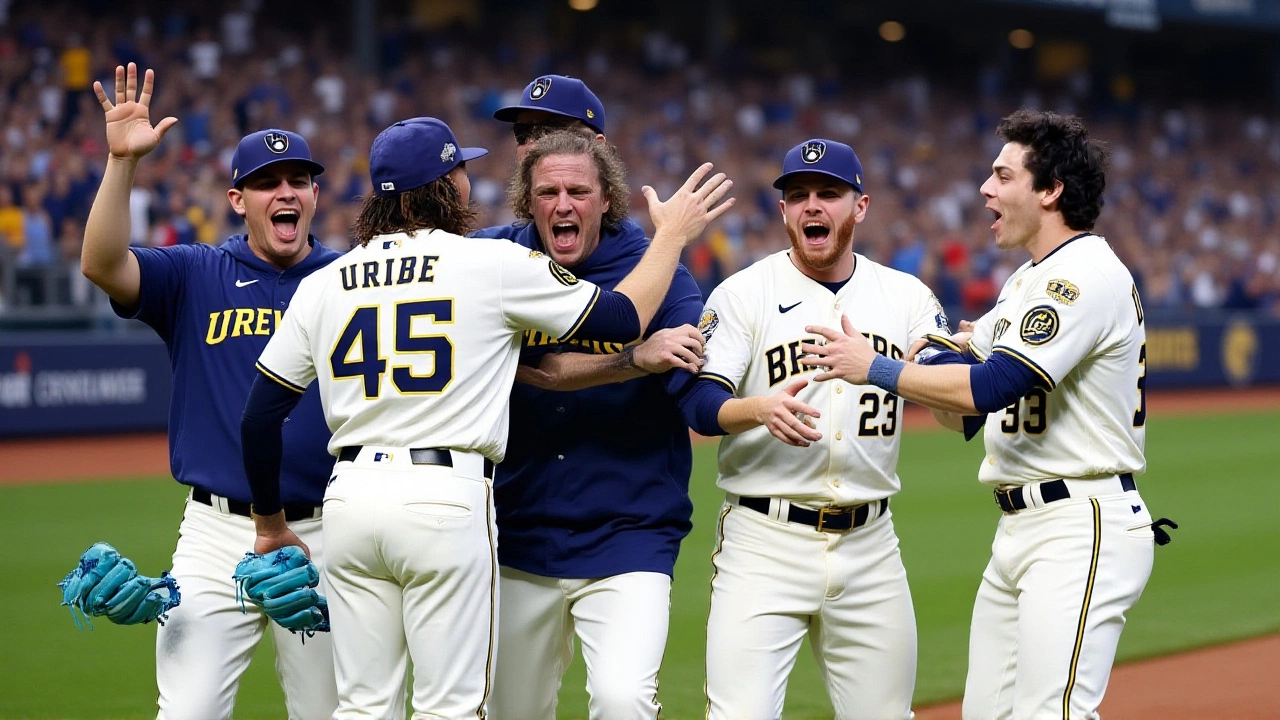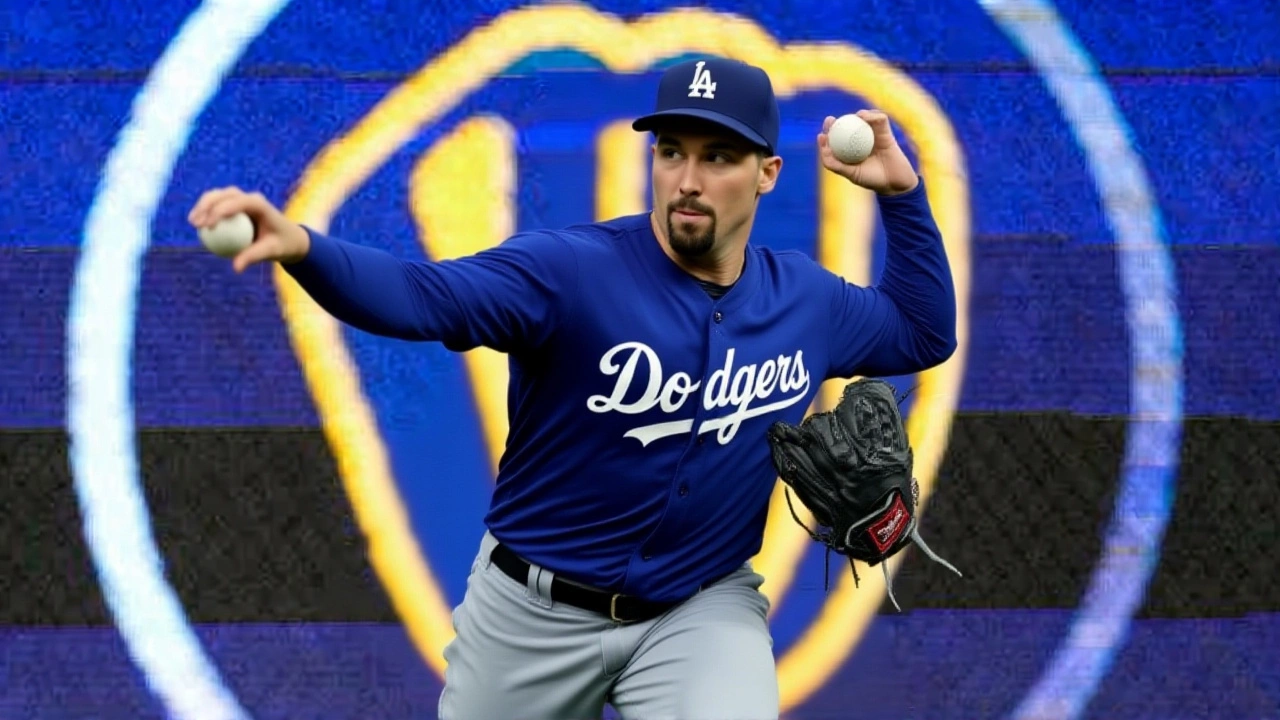When Blake Snell, the left‑handed ace of the Los Angeles Dodgers took the mound at American Family Field on Monday, October 13, 2025, he delivered a near‑perfect eight‑inning, one‑hit effort that gave the Dodgers a 2–1 win over the Milwaukee Brewers in Game 1 of the 2025 National League Championship Series. The crowd of 41,854 felt every pitch, every sigh, and the sudden gasp when the lone run crossed the plate in the sixth.
How the Game Unfolded
Early on, the Brewers tried to shake the Dodgers’ rhythm, sending right‑hander Colt Anderson deep. He produced a single in the first, but Snell promptly erased it with a double‑play grounder. The Dodgers, meanwhile, were silent. After two innings they hadn’t recorded a single hit, and the silence in the dugout was deafening.
The turning point arrived in the middle of the sixth. With a runner on first and two outs, Freddie Freeman, the Dodgers’ veteran first baseman, stepped into the box. He smoked a low‑trajectory fastball over the left‑field wall for a solo home run, snapping the deadlock and sending the Los Angeles crowd at home into a frenzy.
Milwaukee answered back in the seventh, loading the bases with two singles and a walk. Yet an “insane” 8‑6‑2 double play—fielders converging on a grounder at second, throwing home, and then double‑stepping on first—ended the threat. The double play was later described by MLB.com as “one of the most bizarre postseason sequences ever witnessed.”
In the ninth, with the score still 2‑1, the Brewers’ William Contreras swung on a two‑strike pitch and missed. The next batter drew a walk, loading the bases. Then Mookie Betts stepped up, fouled off a pitch, and earned a bases‑loaded walk that forced in the winning run. One swing, one walk, and the Dodgers clinched the victory.
Key Performances & Numbers
- Blake Snell: 8 IP, 1 H, 0 R, 7 K, 1 BB.
- Freddie Freeman: 1 HR, 2 RBI, .286 AVG in the postseason to date.
- Mookie Betts: 1 walk (bases‑loaded), .333 OBP in the series so far.
- Milwaukee Brewers: 12 hits, 5 walks, .262 team batting average.
Snell’s line was especially impressive considering his regular‑season workload of 61.1 innings, a 5‑4 record and a 2.35 ERA. The 26 walks he issued all season proved irrelevant on this night—he walked just one batter.
Freeman, who entered the playoffs hitting .217 with two doubles, shifted gears with his sixth‑inning blast. It was his 25th career postseason home run, tying him with former Dodgers great Davey Lopes for the most in franchise history.

Betting Angles & Historical Context
The odds makers had the Dodgers as -150 favorites, with a run total set at 7.5. The over/under reflected the expectation of a high‑scoring affair, yet the game turned into a pitch‑first duel. Pre‑game prop bets highlighted Freeman at +525 to homer and Contreras at +560, both of which paid out nicely for the sharp bettors who backed Freeman.
Historically, winning Game 1 on the road in a best‑of‑seven series has been a solid predictor of series success. Since the 2‑3‑2 format debuted, road‑side victors have taken the series 40 of 71 times (56.3%). Even more compelling, teams that seize Game 1 in any best‑of‑seven win the series 126 of 194 occasions (64.9%). The Dodgers now sit on a statistical advantage that could ripple through the next six games.
Adding to the narrative, the Brewers had swept all six regular‑season meetings with Los Angeles, winning each by three runs or more. Yet postseason baseball often rewrites regular‑season scripts, and Snell’s performance underscored why the playoffs are a different animal.
Reactions from the Dugout and Beyond
“I felt the rhythm from the first pitch,” Snell said in the post‑game interview. “It was a night where everything clicked, and the guys behind me gave me the confidence to attack every batter.”
Freeman, still beaming, added, “I’ve been waiting for that moment all season. It’s a relief to finally give my teammates a lead, especially in a game as tight as this.”
Brewers manager Pat McLennan remained optimistic: “We saw the ball move, we trusted our defense. One play can swing a series, but we have three more games to respond.”
Analysts pointed out that the Dodgers’ defense, especially the bizarre double play, showed poise under pressure. The Brewers, meanwhile, will look to adjust their bullpen usage—particularly the handling of right‑handed hitters like Contreras, who posted a .375 average against righties during the regular season.

What Comes Next?
Game 2 is slated for Tuesday, October 14, 2025, same venue, same night‑time kickoff. The Dodgers will hand the ball to right‑hander Julian Garciaparra, while the Brewers will likely start left‑hander Aaron Ashby. If the Dodgers keep the pressure on, they could clinch the series in six games, securing home‑field advantage for Games 6 and 7.
For the casual fan, the takeaway is simple: a stellar start by Snell, timely power from Freeman, and a clutch walk from Betts gave the Dodgers a razor‑thin edge. For the betting community, the odds shifted dramatically after the game, rewarding those who trusted the Dodgers’ pitching depth.
Meanwhile, Milwaukee will regroup, remembering that baseball is a marathon, not a sprint. The Brewers still have the firepower—166 regular‑season home runs and a potent lineup led by Contreras—to bounce back. The NLCS has just begun, and the stakes have never been higher.
Frequently Asked Questions
How does this win affect the Dodgers' chances in the NLCS?
Winning Game 1 on the road puts the Dodgers in a statistically favorable position—historically, road winners take the series 56.3% of the time under the current 2‑3‑2 format. It also gives them a psychological edge, allowing them to dictate the pace of the next two home games.
Who were the standout performers for Milwaukee?
Catcher William Contreras was the most consistent offensive threat, having hit two home runs in the NLDS and posting a .375 average against right‑handed pitching. Reliever Brandon Woodruff also kept the game close with a scoreless sixth inning before the Dodgers broke through.
What made Blake Snell's outing so exceptional?
Snell threw eight shutout innings while allowing just one hit and striking out seven batters. His ability to locate pitches all night, especially in high‑leverage situations, combined with a low walk total (one) mirrored his regular‑season 2.35 ERA, but the postseason pressure amplified the performance.
How did the betting market react to the game?
Sharp bettors who backed the Dodgers at -150 collected quickly, while prop bets on Freeman’s home run (+525) and the total runs over 7.5 paid out handsomely for those who foresaw a low‑scoring affair. The odds for Game 2 shifted toward the Brewers as the series evened out.
What are the key factors to watch in Game 2?
Pitching match‑ups will be crucial: whether Dodgers’ Julian Garciaparra can replicate Snell’s dominance, and if Brewers’ left‑hander Aaron Ashby can neutralize the Dodgers’ left‑side power. Defensive execution, especially around the infield, and bullpen depth will also shape the outcome.
